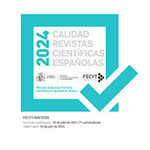The afterlife of François Le Moyne’s Annunciation on eighteenth-century Portuguese azulejos
Abstract
Considered lost until a few years ago, the Annunciation painted by François Le Moyne in 1727 (and turned into a print, in the following year, by Laurent Cars) was widely copied, both in paintings and prints. But while the paintings – some of them thought to have originated in Le Moyne’s own workshop – are well documented, the same cannot be said of the prints. Nonetheless, these works remain highly significant, as they were the main vehicles for the dissemination of images in the 18th century. In Portugal (and Brazil), researchers have found 34 eighteenth-century azulejo panels inspired by this composition. Based on these findings, they concluded that the model launched by Le Moyne’s painting and promoted by Cars’ print became highly popular from the 1740s on, and even more so with the rise of the Rococo style. In fact, it ended up replacing the previous models, thereby putting an end to the pictorial diversity that had characterized former depictions of the Annunciation in azulejo.
Downloads
Article download
License
In order to support the global exchange of knowledge, the journal Eikon Imago is allowing unrestricted access to its content as from its publication in this electronic edition, and as such it is an open-access journal. The originals published in this journal are the property of the Complutense University of Madrid and any reproduction thereof in full or in part must cite the source. All content is distributed under a Creative Commons Attribution 4.0 use and distribution licence (CC BY 4.0). This circumstance must be expressly stated in these terms where necessary. You can view the summary and the complete legal text of the licence.











